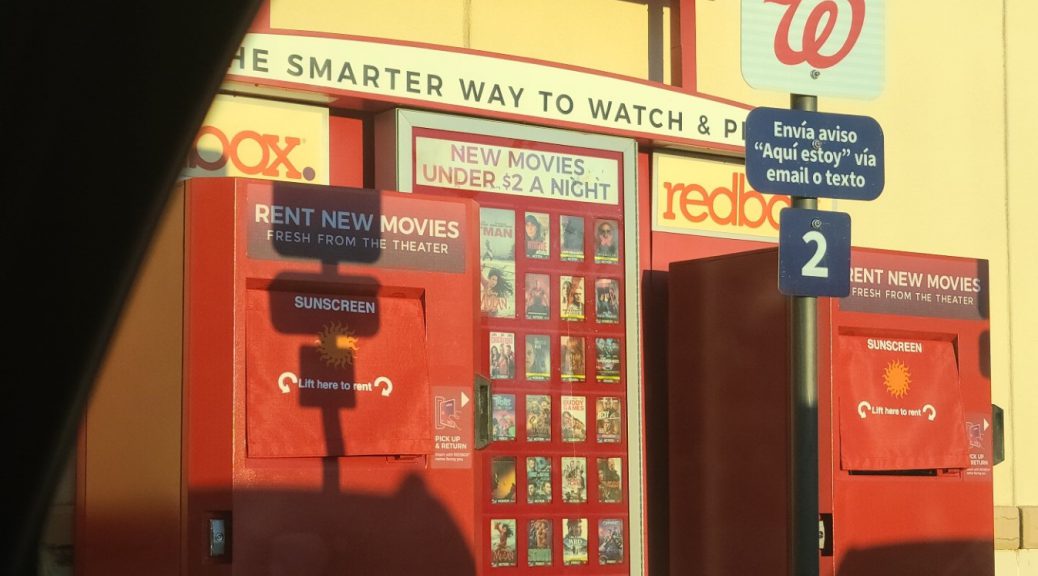
“Levers that worked in the past, such as investing in more content or certain marketing promotions, are no longer sufficient as a counterweight.” “We are facing challenges from changes in the marketplace and how consumers access content in various formats,” Outerwall CEO Erik Prusch acknowledged on the company’s earnings call this month.

Just as Redbox hastened Blockbuster’s demise, the kiosk operator is losing share to services that offer more convenience, value and selection - with instant viewing across multiple devices. Those included “successive quarters of weak content” and the effect of price hikes enacted in December 2014, which increased the daily rental rate for standard DVDs from $1.20 to $1.50.īut the fundamental factor pushing Redbox downward is that people are increasingly consuming entertainment on digital outlets like Netflix, Hulu, iTunes, Amazon, Comcast and other pay-TV ops rather than via DVD. Outerwall blamed a variety of factors for Redbox’s ongoing woes. For 2016, Outerwall expects Redbox rentals to decline 15%-20%, and the company plans to remove up to 2,000 underperforming kiosks after ending last year with 40,480.įormer Redbox CEO Mark Horak, shown here at last year’s Press Play: Variety Home Entertainment and Digital Hall of Fame event, departed the DVD rentals company after less than two years in the job.
RED BOX NEW MOVIES MOVIE
Redbox’s revenue for the fourth quarter of 2015 dropped 17%, to $407 million, as movie rentals plunged 24% year over year. But at this point, it’s about managing the decline.”

“It could be five years from now or 15 years from now. Until then, it’ll take what it can get.įarhad Manjoo covers technology for Slate and is the author of True Enough: Learning to Live in a Post-Fact Society.“It’s a certainty that at some point consumers will no longer be renting movies out of Redbox kiosks,” says Piper Jaffray analyst Michael Olson. Sure, it’s unlikely Redbox will survive the transition to streaming its chief assets - all those kiosks - will suddenly become a liability. In industries where shifts in technology dictate market conditions, why plan for the next big thing when you can make money with the little steps along the way? By the time GM launches its plug-in Volt, Toyota will have been selling the gasoline-based Prius for a decade. “That’s the most interesting part - where technology meets old-fashioned field distribution,” Lowe says. The kiosks send their inventory orders up to the mother ship every week, and Redbox’s technicians fan out to each kiosk to stock it with new DVDs. Each machine packs a sophisticated inventory-management system that determines how many copies of different new titles to order based on past performance of similar movies at that location. This lets customers browse and reserve movies at their local Redbox through the Web, and return movies they rent from one Redbox to any other. Each machine is connected to the Internet via DSL or a 3G cellular modem. What’s surprising, though, is how much wizardry goes into making Redbox work. “Almost all the time, half of new releases are in consumers’ homes.” As a result, a new Redbox kiosk becomes cash-flow positive within four to six months. “It expands movie consumption in the same way Netflix’s all-you-can-eat program does,” Lowe says. Customers pay a buck per movie per night, a price low enough to encourage people to take risks on films they’re not sure about, or to keep a movie an extra night.

Its siren song is emblazoned in large type across the front: $1 dvd rentals. Redbox brings these twin impulses together, typically at your supermarket. The other thing people look for during those hours: dinner. “Two-thirds of all films for rental are selected between 4 and 9 in the evening,” says Mitch Lowe, Redbox’s president.

It’s winning by being in more places than Blockbuster and faster than Netflix. Redbox has positioned itself as the perfect in-between technology - the next best thing to on demand. But Hollywood’s byzantine licensing structure precludes that from happening anytime soon. Amazon, Apple, Netflix, the cable companies, and many startups are gearing up to send every movie to your home on demand. Ask any entertainment bigwig where the movie-rental business is going and you’ll hear one thing: digital streaming. Redbox is convenient and it’s cheap, but the company’s fortunes also rest on a more sophisticated calculation about the marketplace. “It’s really scary,” Hastings told The Hollywood Reporter in March. Reed Hastings, founder of Netflix, the innovative darling of the movie-rental business, has called Redbox one of his most challenging rivals. Redbox - founded in 2002 as a division of McDonald’s and purchased by Coinstar this year - runs 15,000 machines in stores across the country and plans to have about 20,000 in place by the end of the year. Yet despite Redbox’s antiquarian image, the kiosks are a sensation.


 0 kommentar(er)
0 kommentar(er)
